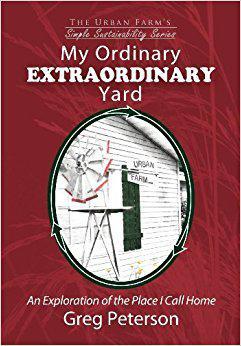Our Elemental Connection to Seeds
By Carla Woody
Twenty years ago I was first introduced to indigenous traditions through the Native teachings of Peru, and then over the years to Maya, Hopi and a number of others in the US and elsewhere. One of the primary attractions for me is the innate understanding these lifeways hold toward connection to the elements—earth, air, fire and water—each interacting with the other to nourish life. Not long after my first encounter, I had the overwhelming desire to get my fingers in dirt. At the time I lived in an inner city Ohio neighborhood, far removed from nature. Nevertheless, I dug up a third of my back yard and began to experiment, planting medicinal plants and herbs, using them for my own purposes. Only then did I begin to feel like a hole was being filled.
 San Juan Chamula, Chiapas, Mexico ©2012 Carla Woody
San Juan Chamula, Chiapas, Mexico ©2012 Carla Woody
Apab’yan Tew is an Ajq’ij, or Day Keeper of the K’iche’ Maya tradition from the village of Nawalja’ in the Guatemalan highlands. His people come to him for advice and ceremonies in regard to the Tzolk’in calendar, still used today in relation to cultivation and optimal timing for individual or community needs. He described to me knowledge that came to him years ago:
“I entered the fields with full comprehension of what I was doing. The ceremonies, respect to the Earth, the Sky, the seed, my body. I understood about interconnection. Not in the New Age way. But that I was part of the construction of the Universe. There’s a saying. When you have your seed and you sow it, you help it to grow, then you have your first meal [from the seed], it makes you a real being. It happens when you are a child or maybe a teenager. That’s the moment you realize you must not waste anything! You must treat everything with respect. You must not complain about anything, let’s say the weather…what the Sky is doing…what the Earth is doing in the growing of things. When you eat the first food you prepared yourself from the beginning, then you are a real person, a winaq.”
The seeds Apab’yan’s people plant have been cultivated with careful attention and ritual over centuries, and bred into their very identity as Maya. Unlike many places, they don’t have a problem with maintaining the purity of their seeds, largely due to isolation. Others aren’t so fortunate in that regard but wish to retain and plant heirloom seeds, without questions of safety and health relating to genetically modified strains. As a result, in pockets around the world, a grassroots movement is afoot—seed preservation to protect biodiversity. Individuals and organizations are quietly taking measures to save seeds in their original form like Native Seeds/SEARCH in Tucson, Navdanya in India, the NSW Seedbank in Australia and 1,000 more.
San Juan Chamula, Chiapas, Mexico ©2012 Carla Woody
Flordemayo is an esteemed member of the International Council of 13 Indigenous Grandmothers. This group of female elders has been welcomed to audience by the Dalai Lama and awarded the 2013 Pfeffer Peace Award for their work for peace through prayer, education, and the preservation of diverse cultures. As part of her personal mission, Flordemayo was called to found the Seed Temple, a seed bank. Located on forty acres in Estancia, New Mexico, this volunteer-run project includes an underground seed vault, a classroom to teach seed saving and ceremonial spaces on the land in the Native tradition. She relayed the importance of this work, “The seed has a spirit, but it doesn’t have a voice. We are giving the seeds a voice!” For the last year, Flordemayo and her volunteers have been receiving seeds from Native elders and heirloom gardeners for cataloging and storing in the underground vault. Seeds are “lent” in the sense that individuals may obtain a portion of the seed stock, grow in accordance with proper practices and return a portion of the seed produced to the project.
Apab’yan Tew ended our conversation with a final statement on the Maya worldview: “We cannot be who we must be without the land. Another principle is that the body we have is not really ours. It is lent from the Mother Earth herself. So if you create any kind of danger to your body, you are also hurting the Mother Earth. What the Earth produces and what we produce is part of the same cycle, the same system. We are not separated from the Earth, and the Earth is not to be thought of as just a provider of goods. The term that is used in the West is ‘natural resources’ as something to be taken, something to be transformed. For us, we don’t use this term. We use the term ‘elements of life.’ It is our life! It is not a resource.”
Every one of us has the opportunity to maintain this connection to the elements in whichever ways we can. For some years, it has a no longer been feasible for me to attempt a garden due to the amount of travel I undertake. However, I take comfort in the rural area I now live in, the wildlife that wanders through—and the organic farm down the road that provides produce in their on-your-honor stand.
****************
Carla Woody, author of Portals to the Vision Serpent and Standing Stark, sponsors spiritual travel programs with indigenous leaders in Hopi, Peru, Mexico and Guatemala. She founded Kenosis in 1999 to serve human potential and guide the vision: One tribe, one world. In 2007, she established Kenosis Spirit Keepers as a nonprofit extension to help preserve Native traditions threatened with decimation. Carla makes her home near Prescott, Arizona. Visit her websites: Kenosis, Kenosis Spirit Keepers and blog.








